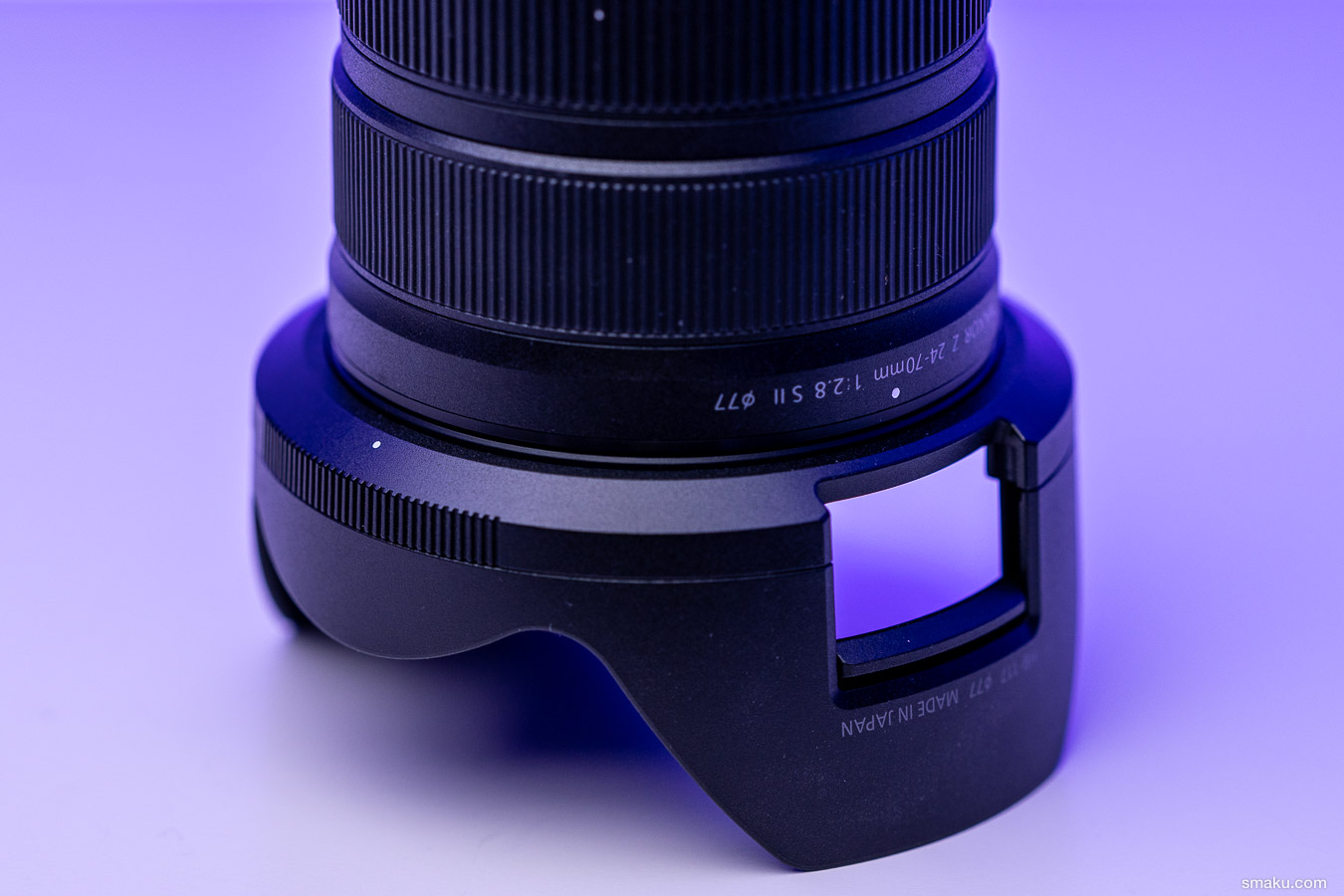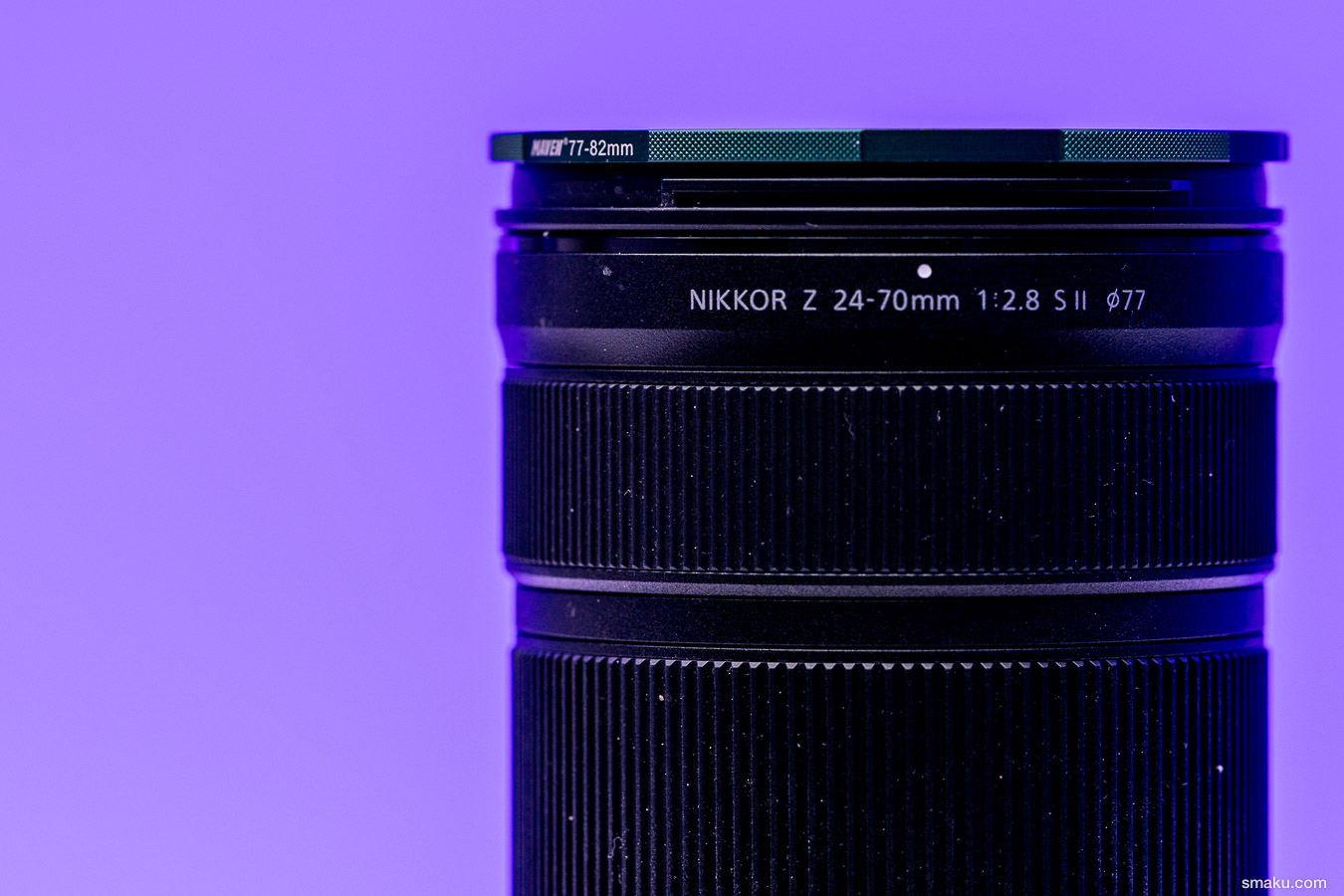The newly designed lens of an already iconic lens proves to be a worthy upgrade.
While you can’t go wrong with either of these fantastic lenses in your camera bag, there are key differences between the two that you should consider when looking at these lenses.

The Nikkor Z 24-70mm f/2.8 S lens was originally released in February of 2019. Marking part of Nikon’s Holy Trinity set of Z lenses for their mirrorless cameras, it quickly became a favourite of photographers all over with its compact and ultra sharp performance.
Fast forward to only six years later and Nikon has introduced its successor. For a lens, six years is a fairly short lifespan, so any upgrades to this lens would have to be quite special in order for people to accept the version II in their camera bags.
Noting that the MSRP of version II is a few hundred dollars more expensive than its predecessor, will this new lens live up to the high praise of the original? Only you can make that decision.

Details
Here’s a breakdown of some of the key differences between the original and the new Z 24-70mm f/2.8 S lenses.
| Feature | Z 24-70mm f/2.8 S II | Z 24-70mm f/2.8 S |
|---|---|---|
| Release date | September 2025 | February 2019 |
| MSRP | $3499 (CAN) / $2799.95 (US) | $3099 (CAN) / $2299.95 (US) |
| Weight | 675 grams | 805 grams |
| Dimensions | 84mm × 142mm | 89mm × 126mm |
| Filter thread | 77mm | 82mm |
| Lens construction | 14 elements in 10 groups | 17 elements in 15 groups |
| Diaphragm blades | 11 rounded blades | 9 rounded blades |
| Min. focus distance | 0.24m (24mm) – 0.33m (70mm) | 0.38m |
| Zoom mechanism | Internal zoom | Extending zoom |
| Autofocus system | Silky Swift Voice Coil Motors (SSVCM) multi-focusing system for faster and quieter performance | High-performance multi-focusing system (STM) |
| Video feature | Minimal focus breathing, quieter AF, de-clickable aperture, filter access window on hood | Minimized focus breathing and quiet AF |
Why upgrade?
Only you can answer this question as every photographer’s needs are different. Personally, I found the internal zoom to be my deciding factor. There were so many times when I was shooting in inclement weather that I often found myself restricting what focal length I was using just to save myself from getting water or dust inside the zoom barrel.
With internal zoom I no longer have to worry about this, allowing me to simply shoot how I please. That being said, the internal zoom comes at the cost of the lens being 16mm longer, which will take up more space in your camera bag.
However, the weight savings of the new lens is also quite significant, so I appreciate this very much.
Benefits for videographers
This new lens also has key benefits to those doing video work with their cameras:
- Internal Zoom: The centre of gravity of the lens will remain the same throughout the entire focal length range, allowing you to use it on a gimbal without having to calibrate it each time you change focal lengths.
- Constant Length: If you’re using a mat box on your lens, the constant length of the lens now lets you keep the mat box in one place throughout the entire focal length.
- Reduced Focus Breathing: The new version of the lens also has very minimal focus breathing—if at all. It provides subtle focus changes from front to back.
- Quieter and Faster AF: With the addition of the Silky Swift Voice Coil Motor, the lens focuses much faster than the original lens. The focusing is also quieter, allowing you to record video without worrying about adding external noise to the video.
- Filter Window: The addition of the filter window on the hood will allow for easy operation of variable neutral density filters and circular polarizers.

Choices
At the time of this writing, the original Z 24-70mm f/2.8 S lens is still selling at stores. This means as consumers we still have choices as to which lens to get. If your budget doesn’t allow for the newer lens, then you still can’t go wrong with the original, as it is still an excellent performing lens.

Beware of changes
One thing I found myself troubled with is the smaller filter thread diameter. With the original having an 82mm filter thread, I had already invested in 82mm filters. Now that the new lens has a smaller 77mm filter thread, I now need a step-up ring to use my existing filters.
This normally isn’t a problem. The issue occurs when you want to use the new lens hood, which has a filter opening. The lens hood is meant for a 77mm filter thread, so once you add the step-up ring to your lens, the lens hood no longer fits.
It’s unfortunate, but something to consider if you already have 82mm filters like I do.

Final thoughts
If you’re looking for that perfect mid-zoom range lens, definitely consider the new Z 24-70mm f/2.8 S II lens. I do believe the weight savings and internal zoom alone make up for the added cost. If you’re on a budget but still want a mid-zoom lens, then consider the original Z 24-70mm f/2.8 S lens. Better yet, you might luck out and find a used Z 24-70mm f/2.8 S lens on the market, letting you score the lens for much cheaper.
Any takers on my old lens? 😉
If either of those lenses are out of your budget, then I would highly recommend you look into one of my favourite lenses, the Z 24-120mm f/4 S lens. With its extra long telephoto range, compact, and light weight, this high performing lens should be one of the first Z lenses you should consider. You can read my review on that lens here.
YouTube
You can view my YouTube comparison on the two lenses here. Be sure to like and subscribe, and hit that notification button! 🙂

Do you have the original or new Z 24-70mm f/2.8 S lens? Which do you prefer? Let me know in the comments!
Pin the image on the left!